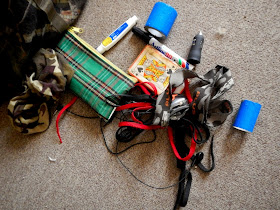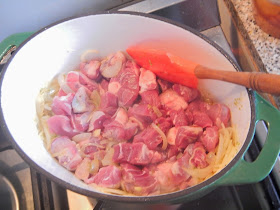William Shakespeare certainly hit the nail on the head.
The run up to the phrase uttered by Macbeth in Act 1, Scene 3 is also to the point:
“(aside) This supernatural soliciting
Cannot be ill, cannot be good. If ill,
Why hath it given me earnest of success,
Commencing in a truth? I am thane of Cawdor.
If good, why do I yield to that suggestion
Whose horrid image doth unfix my hair
And make my seated heart knock at my ribs,
Against the use of nature? Present fears
Are less than horrible imaginings.”
It is as apt to my feelings today as it was pertinent to Macbeth's feelings at the time.
I am not the Thane of Cawdor. I am the designated skipper of a yacht on a voyage across the ocean. But I guess the feelings are pretty much the same.
These emotions overtake us all from time to time. Normally when you are about to venture into another adventure. In my younger days the psychologists and physiologists would tell you that this is a normal feeling. This elevated level of adrenalin that keeps your heart pumping chocolates when you see a pretty girl.
For me it has always been like this when planning a new adventure. It is part of the excitement running up to the day.
But it can be negative. In fact very negative. I have been in situations where I have not prepared sufficiently, mostly due to laziness. In those cases you have this sinking feeling in the bottom of your heart. You know that you are set up for failure even before you start.
I have gone to great lengths to avoid this feeling. It is debilitating.

The question is then how much preparation is enough for this feeling to go away? Well, as far as I can glean from my own studies, it never goes away. In fact, Susan Jeffers has written a whole book about this: “Feel The Fear And Do It Anyway.” You feel like this because you are, amongst other things, also extending your comfort zone by moving outside of the old limits.
So, how to deal with this fear on a passage plan? One idea is to get positive affirmations. For these you need friends who dwell in the same environment, so to speak. People who have lived through the same fears and acquired some skills in this regard. These people are your support system for your journey into the unknown recesses of your psyche.
And simply asking what to do is no help at all. You have not learnt a thing or extended your comfort zone. You need to do your own digging. You need to think the problem through and have a plan. Then review the plan or idea.
Very much like playing a “What if...”-game with your plan. Then you adjust your plan as required. Only then do you go and ask for advice. In this way, you have gone through the thinking at least twice. Once for the original plan and at least once again in review by playing “what if...”
When faced with a situation during your adventure, you have to be able to do independent thinking. Your own thinking. In the case of an ocean voyage it is easy. You know that you will be on your own. But the level of preparation required is not always obvious.
And you need to get your ego out of the way. That little voice in the back of your head saying “we'll make a plan when that happens.” Your ego. It simply means that you have not thought the problem through properly.

Of course, going on a long voyage requires its own physical preparation anyway. In our case it is no use arguing that we are going into the tropics, therefore only the lightest clothing will be required. You will come very short very quickly, as the weather where we are sailing to is simply not the same as where depart from. A simple example.
I am at present worried about the navigational information I have on hand.
Some charts were compiled from survey data dating back to 1904. The chart datum states something like “17-24 feet below the jetty at XXXX Harbour,” complete with a rider in the title block of the chart stating that, due to the unavailability of newer survey data, the compiler is not able to vouch for the integrity of information depicted on the chart.
And the depths are in fathoms. No indication of compatibility with GPS co-ordinates.
Not very reassuring if you need to go there at night, believe me.
So the obvious answer lies therein to stay clear of such places as will be shallow enough to pose a problem. Then a lot of insecurity goes away. Update and adjust the planning.
 Simple. Don't complicate your life by overloading your brain with unknowns and imponderables.
Simple. Don't complicate your life by overloading your brain with unknowns and imponderables.Having said all this, it leaves me happily moving forward into the last phase of my preparation. I did not realise just how much psychological support I have until people contacted me with advice or just a moment of shared peace over a glass of wine and a coffee.
Wonderful to have the reassurance that others are in synch with your emotions and thinking. And surely a blessing.
As our departure date draws near, I can feel the positive vibe in my head. Gone are the withdrawal symptoms from a lack of exposure to the open oceans.
Lay on MacDuff!
Authored by Johan Zietsman
Last updated on 2014-05-31




























